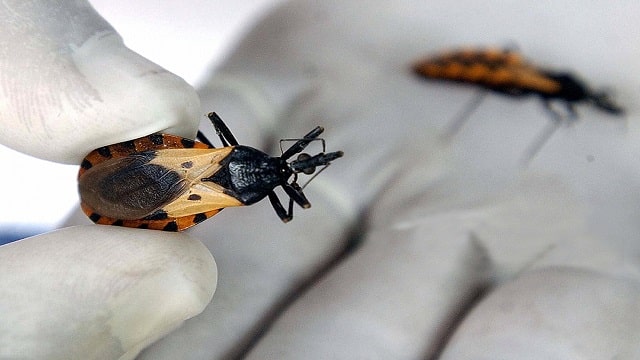Chagas disease is a zoonotic disease transmitted from vertebrate animals to humans and vice versa. This disorder causes inflammation and infection caused by Trypanosoma cruzi, a type of parasite in the form of insects, such as fleas and cockroaches. Therefore, Chagas disease is often referred to as the kissing bug.
The insects that spread the parasite that causes Chagas disease are from the genus Triatoma, including Triatoma infestans, Rhodnius prolixus, and Panstrongyius megistus. The disease is more common in South America, Central America, and Mexico, where the triatomine insects originate.
This disease can infect everyone without exception. If not treated immediately, Chagas disease can cause serious heart and digestive problems. In someone who has acute disease, the parasite needs to be destroyed. But if the disorder is chronic, the treatment that needs to be done is to manage the symptoms and prevent the infection from spreading.
Chagas Disease Symptoms
A person who has Chagas disease will experience a number of symptoms, namely:
- Fever
- Fatigue
- Pain in the body
- Headache
- Rash
- Loss of appetite
- Diarrhea
- Vomiting
- Swelling of the eyelids
In general, these symptoms will last for several weeks or even longer but can disappear on their own. However, it is advisable to see a doctor if Chagas disease symptoms recur or if you have just returned from a country with high exposure to the T. cruzi parasite. By immediately checking yourself with a doctor, Chagas disease can be treated quickly.
Chagas Disease Risk Factors
Some factors that can increase a person’s risk of developing Chagas disease include:
- Receiving a blood transfusion or organ transplant from a person with the disease.
- Consuming raw food that has been contaminated with the parasite or eating undercooked meat from infected animals.
- Pregnant women who are infected can transmit the disease to the fetus in the womb.
- Living in rural areas with poor sanitation or living in countries with high exposure to the T. cruzi parasite, such as Central America, South America and Mexico.
- Living in a housing complex that has triatomine insects.
- Travelers visiting countries with high exposure to the disease.
- Spending time in a forest filled with wild animals that may be infected.
Causes of Chagas Disease
The most common cause of Chagas disease is the parasite Trypanosoma cruzi. The disease is transmitted to humans through the bite of an insect called a triatomine. The insect can become infected with T. cruzi when it ingests the blood of an animal infected with the parasite.
These insects usually bite humans while they are sleeping. Infected insects defecate after feeding and leave parasites on the skin. The most commonly bitten parts of the body are areas with thin skin, such as the eyes or mouth.
After that, the parasite enters the body through the eyes, mouth, cuts or scratches, or insect bites. Scratching or rubbing the bite area can cause the parasite to enter the body. Once inside the body, the parasite multiplies and eventually spreads.
Chagas Disease Diagnosis
The doctor will first perform a physical examination, such as asking about the symptoms experienced and other factors that can increase the risk of contracting Chagas disease.
If you experience symptoms of Chagas disease, a blood test may be needed to confirm the presence of the T. cruzi parasite or the levels of proteins produced by the immune system (antibodies) to fight the parasite in your blood.
If diagnosed with Chagas disease, it is recommended to undergo several additional tests to determine whether the disease is already in the chronic phase and has the potential to cause heart or digestive complications. These supporting tests include:
- Electrocardiogram (ECG) to monitor heart activity.
- Chest X-ray to see if the heart is enlarged.
- Echocardiogram to see if there are changes in the heart or its function.
- Abdominal X-ray to look for changes in the colon.
- Endoscopy.
Chagas Disease Treatment
In the early stages, Chagas disease is quite easy to cure. Treatment focuses on killing the T.cruzi parasite by taking benznidazole and nifurtimox. These drugs must be taken for 2 months. Treatment will be effective if the drugs are taken as soon as possible after infection.
This disease needs to be treated immediately so that it does not enter the chronic phase because the medicine cannot cure the disease. However, this medicine can slow its development and minimize serious complications. In addition, some additional treatments may be needed depending on the signs and symptoms that arise, such as:
- Heart-related complications require taking medications, a pacemaker, or the use of other devices to ensure the heart remains healthy.
- Complications related to treatment require changes in diet, consumption of drugs, corticosteroids, and others.
Chagas Disease Complications
If Chagas disease has progressed to the chronic phase, serious heart or digestive complications can occur. These may include:
- Heart failure.
- Enlargement of the esophagus (megaesophagus).
- Enlargement of the large intestine (megacolon).
Chagas Disease Prevention
Chagas disease is a dangerous disease. However, you can avoid this disease by doing some preventive measures such as the following:
- Spray the inside and around the house with insecticide.
- Do not stay in muddy areas, filled with straw, or in shacks for long periods of time.
- Put up a mosquito net on the bed.
- Using mosquito repellent lotion.
- Maintain food hygiene and storage.
- Checking donor blood, organs, cells, and tissues before receiving a transfusion.
- Perform routine uterine check-ups to avoid transmitting this disease to your child.
- Do not consume raw foods.
When to See a Doctor?
If you have just visited a country that has a high risk of Chagas disease and are experiencing symptoms, it is a good idea to get checked immediately.

